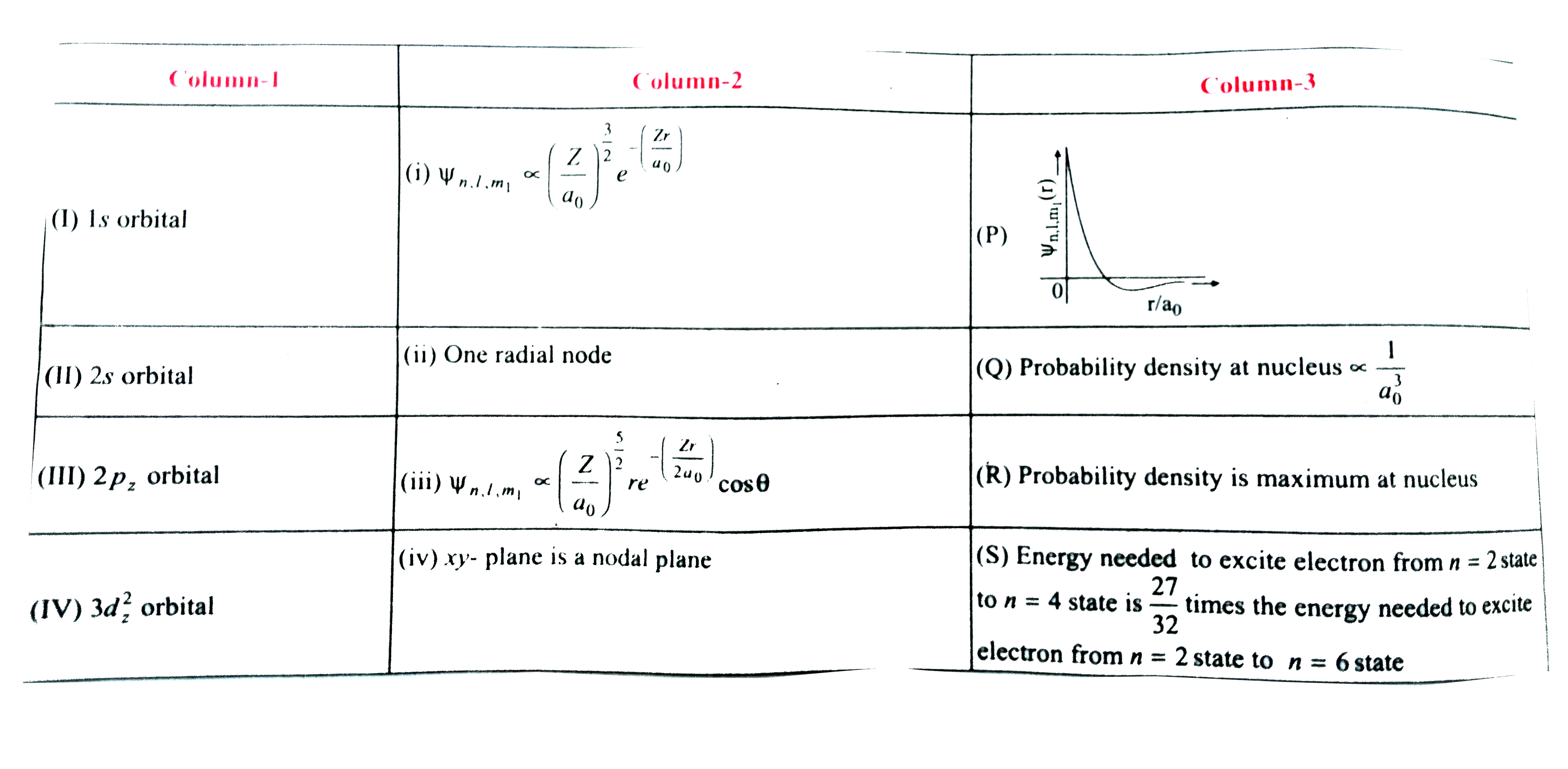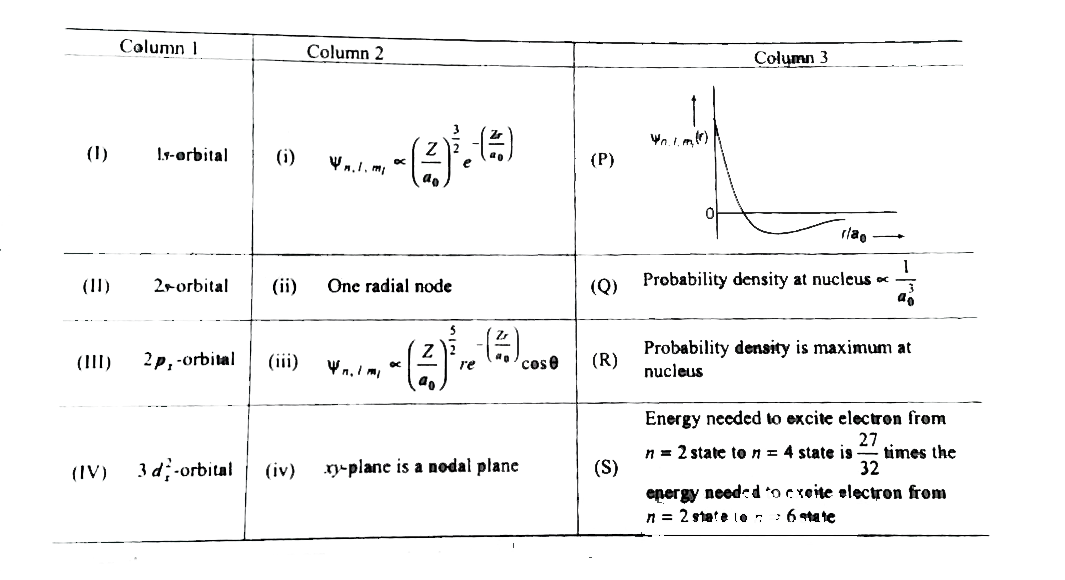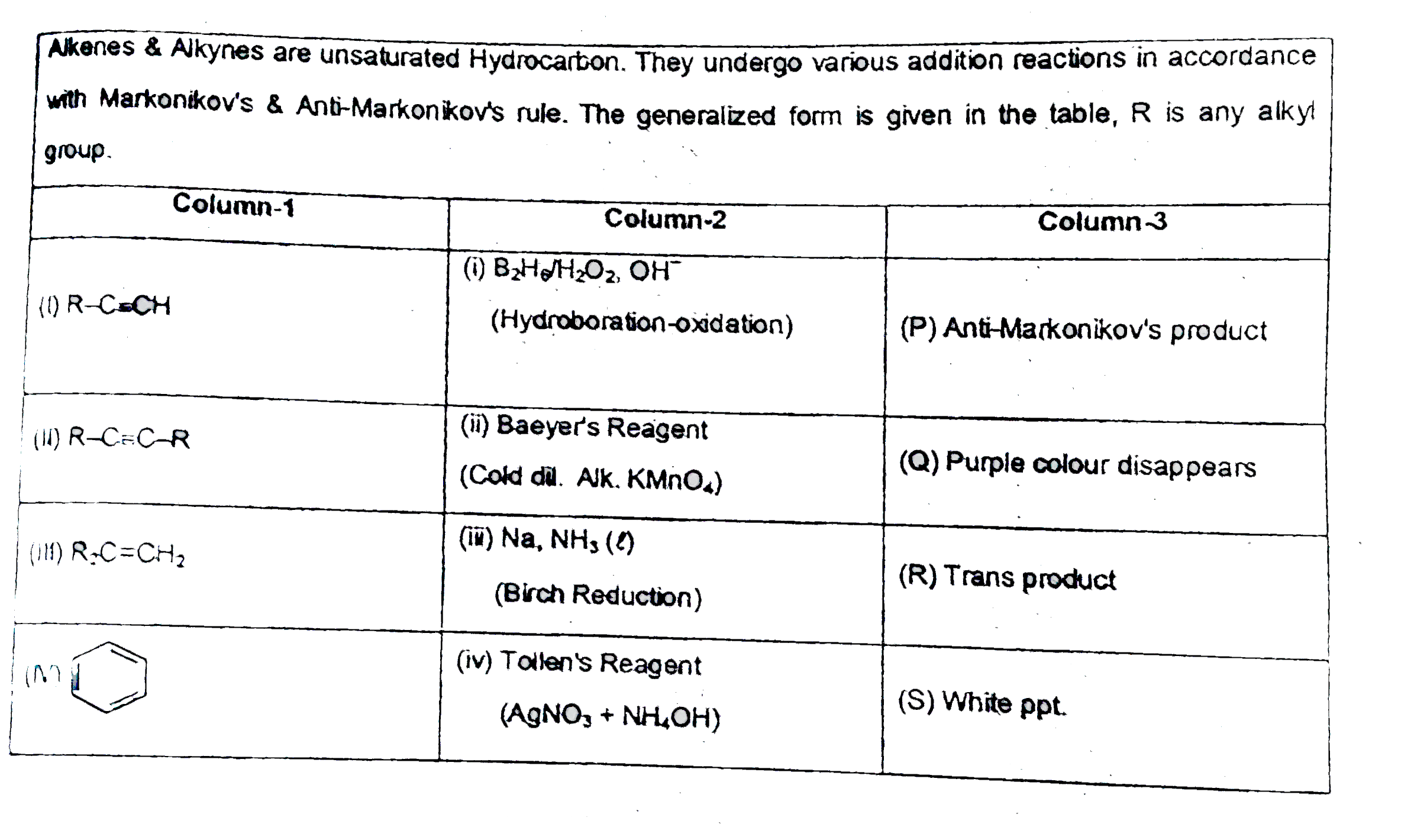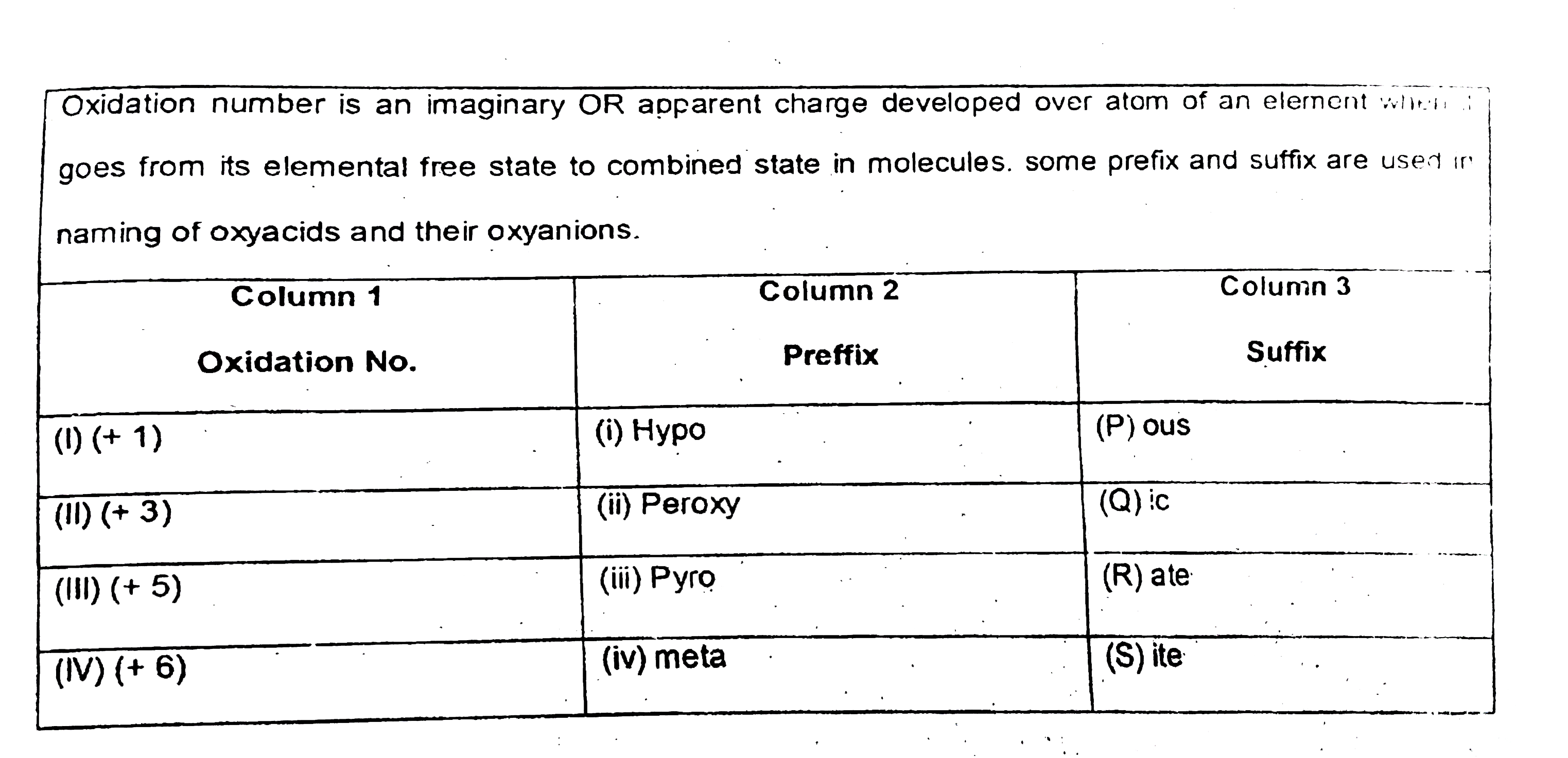For the given orbital in column 1, the only correct combination for any hydrogen like species is
A
(2) (ii) (P)
B
(1) (ii) (S)
C
(4) (iv) (R )
D
(3) (iii)(P)
Text Solution
The correct Answer is:A
|
Updated on:21/07/2023
Topper's Solved these Questions
Similar Questions
Knowledge Check
- Question 1 - Select One
The wave function Φn,l,m1 is a methematical function whose value depends upon shperical upon spherical polar coordinates (r,θ,ϕ) of the electron and characterized by the quantum numbers, n,l and m1. Here r is distance from nucleus, θ is colatitude and ϕ is azimuth. in the mathematical functions given in the table, Z is atomic number, a0 is Bohr radius.
 .
.
Q. For the given orbital in column 1, the only correct combination forany hydrogen-like species is:A(IV) (iv) (R)B(II) (ii) (P)C(III) (iii) (P)D(I) (ii) (S) - Question 2 - Select One
The wave function, ψn,l,ml is a mathematical function whose value depends upon spherical polar coordinates (r,θ,ϕ) of the electron and characterised by the quantum number n,l and ml. Here r is distance from nucleus, θ is colatitude and ϕ is azimuth. In the mathematical functions given in the Table, Z is atomic number and a0 is Bohr radius.

For the given orbital in Column I, the Only CORRECT combination for any hydrogen-like species isA(II)(ii)(P)B(I)(ii)(S)C(IV)(iv)(R)D(III)(iii)(P) - Question 3 - Select One

For the given compounds in column (I), the only combination for any terminal alkyne isA(I)(iv)(Q)B(I)(ii)(S)C(II)(i)(P)D(I)(iv)(S)
If the de Broglie wavelength of the electron in nth Bohr orbit in a hydrogen like species is equal to 1.5 ag (agis Bohr radius), then the value of the electron is.
View SolutionFor hydrogen atom, the only correct combination is
View Solution
For given oxidation number in Column-I, the only correct combination for any oxyacid of nirogen is :View Solution
For a lyophilic colloid in column 1, select correct combinationView SolutionA : The radius of second orbit of he+ is equal to that of first orbit of hydrogen
R : The radius of an orbit in hydrogen like species is directly proportional to n and inversely proportional to Z .View Solution


